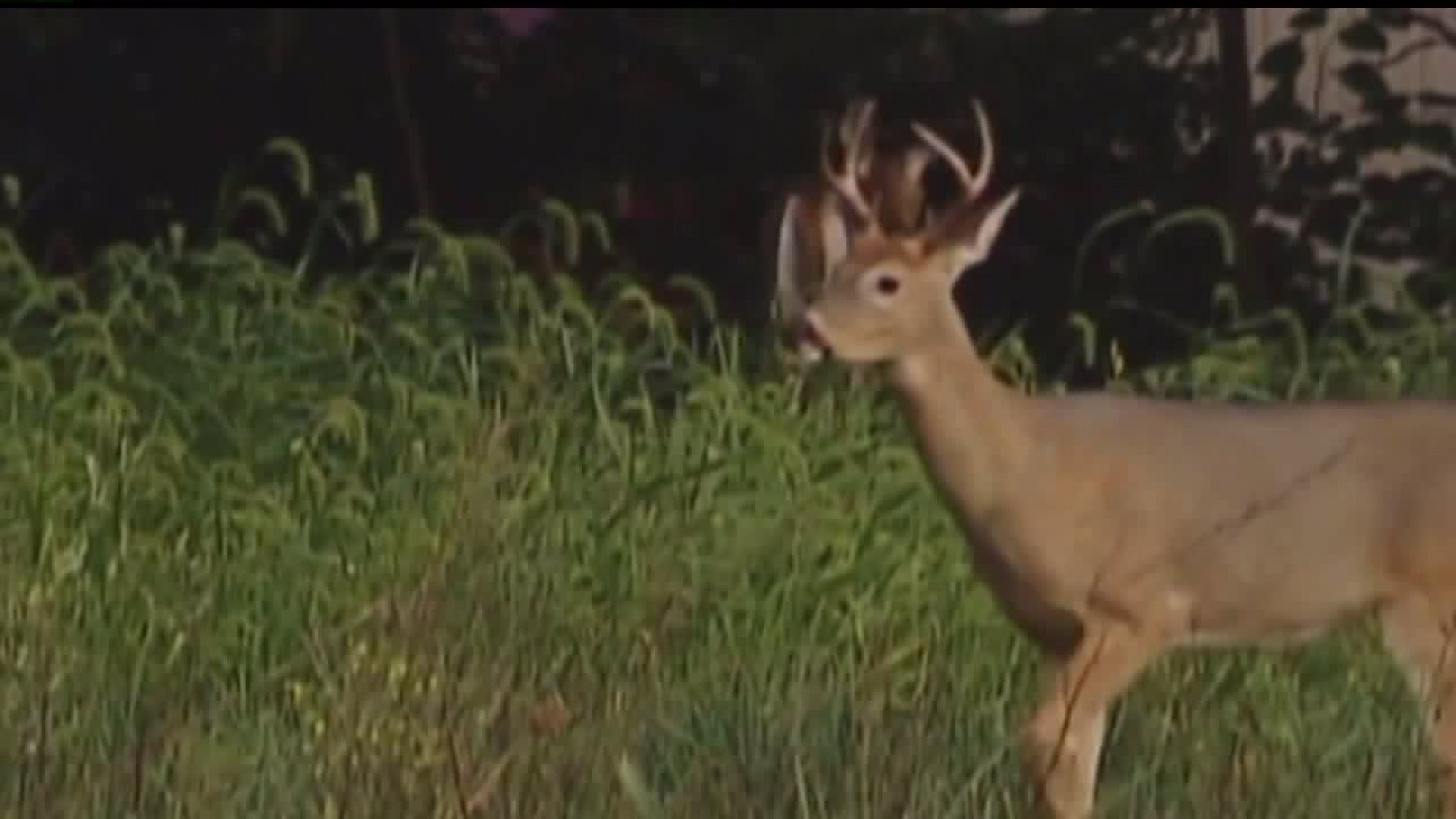CUMBERLAND COUNTY, Pa. — Editor's note: The above video is from 2019.
A road-killed deer in Cumberland County tested positive for Chronic Wasting Disease, causing the state to expand Disease Management Area 2 in South Central Pennsylvania, the state announced this week.
The deer, an adult female, was found in South Middleton Township, the state Game Commission said in a press release. As a result, DMA 2 is expanding east into more of Cumberland, Adams,and York counties.
The change will be in effect for the upcoming hunting seasons and hunters within the new DMA 2 boundaries will be required to comply with additional regulations designed to slow the spread of the disease.
Within DMAs it is unlawful to:
- Remove or export any deer or elk high-risk parts (e.g., head, spinal column and spleen) from a DMA.
- Use or possess deer or elk urine-based attractants.
- Directly or indirectly feed wild, free-ranging deer. It is already illegal to feed elk regardless of DMA location.
- Rehabilitate wild, free-ranging deer or elk.
The new boundary line for DMA 2 follows Route 134 north from the Maryland border for about 4 miles to the intersection of U.S. Route 15, then follows Route 15 north for 36.4 miles, crossing Route 581 where it becomes Route 11. It then follows Route 11 for 2.4 miles to where it meets the west shore of the Susquehanna River at Front Street. The boundary follows the Susquehanna River north for about 15.1 miles to Route 22.
The change follows on the heels of a previous expansion of DMA 2 announced in April.
Besides DMA 2, DMA 4 in southeastern Pennsylvania grew in southern Lancaster County earlier this year and DMA 7 in northeastern Pennsylvania was created in response to a CWD-positive deer at a captive facility.
DMA 7 is the fifth DMA formed following the detection of a CWD-positive deer within a captive facility.
Up-to-date boundaries for all DMAs, as well as maps, can be found here. It’s important that hunters and the general public are aware of those, the Game Commission said.
Hunters can assist in slowing the spread of CWD by harvesting deer in areas where the Game Commission wants to conduct enhanced surveillance. There are 15 CWD Deer Management Assistance Program areas this fall. That’s up from 10 a year ago, the Game Commission said.
“Each of these DMAP units is around a high-priority CWD detection,” said Game Commission CWD Section Coordinator Andrea Korman. “We hope to increase sample numbers in these areas so that we can have a better understanding of the extent of the disease.”
Hunters can purchase up to two antlerless permits per unit. They’re good for taking an antlerless deer in any open deer season, anywhere within the CWD DMAP unit, though hunters must still acquire permission to hunt private property.
The units are designated by number: 3468, 3934, 4311, 4312, 4313, 4314, 4315, 4316, 4464, 4760, 4803, 4806, 4825, 4839 and 4843. Of those, units 4803, 4806, 4825, 4839, and 4843 are new this year.
Hunters can find the units by county and check for available permits at https://www.pgcapps.pa.gov/Harvest/DMAP. Permits can then be purchased at any license issuing agent or online at huntfish.pa.gov.
As of now, all CWD DMAP units still have permits remaining.
CWD is an always-fatal neurological disease caused by a misfolded protein called a prion and is a threat to deer and elk, the Game Commission said. It’s classified as a transmissible spongiform encephalopathy and is similar to scrapie in sheep, mad cow disease in cattle and Creutzfeldt-Jakob disease in humans.
CWD spreads through direct animal-to-animal contact, as well as indirectly through prion-contaminated environments, the Game Commission said. CWD-infected individuals shed prions through saliva, urine and feces, and infected carcasses contribute to environmental contamination. Once in soil, CWD prions remain infectious for decades.
There is no evidence of CWD infecting humans or other species under natural conditions, according to the Game Commission.
However, the Game Commission said, much is still unknown about CWD, and the Centers for Disease Control and Prevention recommends not eating the meat of a CWD-positive deer.
The Game Commission monitors CWD by conducting road-killed deer surveillance year-round and testing samples from hunter-harvested whitetails. Hunters can have their harvested deer tested for free by dropping its head in one of the Game Commission’s collection bins, the locations of which will be announced prior to hunting season.
Hunters can check those test results, and the public in general can see data on CWD distribution, prevalence and more, on the Game Commission’s CWD Surveillance Dashboard at https://pgcdatacollection.pa.gov/CWDResultsLookup.
The dashboard is updated weekly.
For more information about CWD or to ask questions, contact the Game Commission’s CWD Hotline at 1-833-INFOCWD, email INFOCWD@pa.gov or visit https://arcg.is/1G4TLr.

